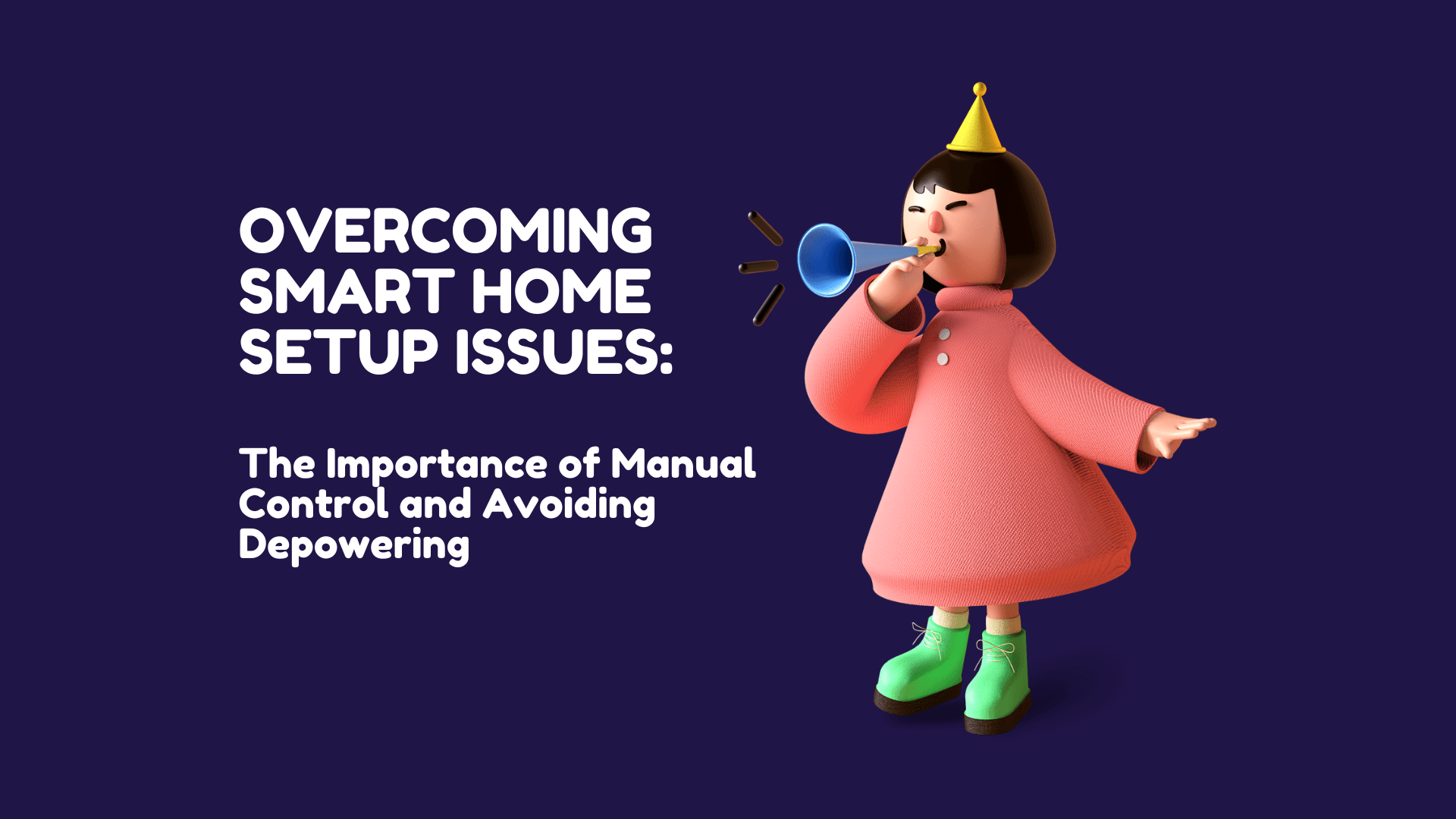Here are the two primary reasons why most smart home setups are disappointing and often inferior to non-smart setups. While smart homes offer convenient features like voice control and automation, integrating these functionalities often complicates their usage. Let me explain.
Table of Content:
- The first issue: manual control limitations and solutions
- The second issue: depowering smart devices and losing smart control
- Conclusion and tips for avoiding pitfalls and maximizing smart home benefits
Watch it on YouTube if you're tired of reading!
Issue 1: Limited Manual Control
The first issue arises with manual control of all smart devices. These devices can only be controlled through voice commands, smartphone apps, or Wi-Fi connectivity. This becomes problematic when the Wi-Fi goes out or when someone else in the house needs to control the device but lacks access to voice or phone control. Relying solely on these “smart”methods limits manual control, which is essential for flexibility.
To address this problem, there are two solutions. The first is to set up automation, such as connecting a smart switch to a smart lamp to have a physical option to turn the light off manually. The second solution is to use standalone smart buttons that can wirelessly control any device. Including a manual backup ensures that your smart home remains fully functional even when things go wrong or when others need to operate it. Manual control should be incorporated for every device in your smart home.
Issue 2: Depowering Smart Devices
The second issue concerns the depowering of smart devices. For example, turning off a smart lamp through its physical switch may seem like a manual control option, but it actually removes the smart control functionality. Depowering the device makes the smart features intermittent, as you are uncertain when you can use voice commands or smartphone control.
To avoid this problem, always ensure you have both smart and manual control options for turning off devices. Many people make this mistake with smart bulbs by manually switching off the light fixture, thus disabling the smart features and making it difficult to rely on voice or app control. It's essential to maintain consistent functionality and avoid uncertainty.
Conclusion
The two most significant pitfalls in smart home setups are neglecting manual control and inadvertently depowering smart control. It's crucial to enable manual control for all devices while retaining the ability to use voice commands. A smart home should provide convenience and integration, not confusion and inconvenience.
Feel free to ask if you need suggestions or have questions about overcoming these challenges. Thank you for reading, and I appreciate your support.




